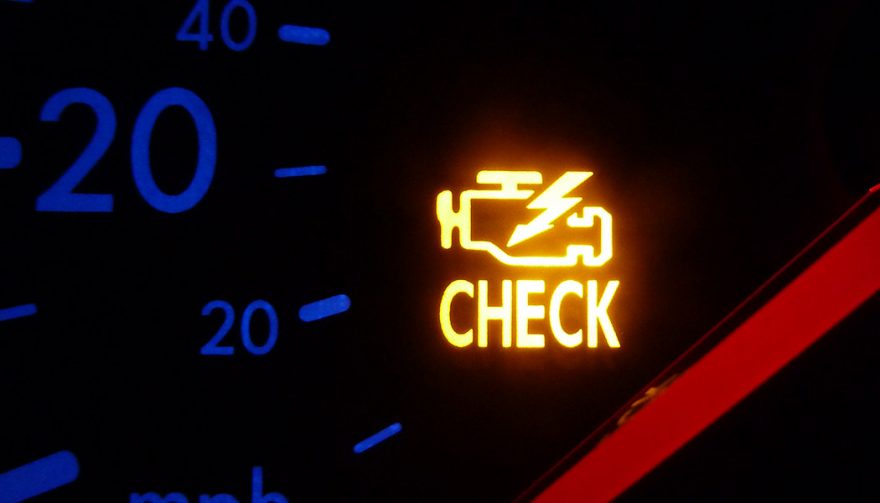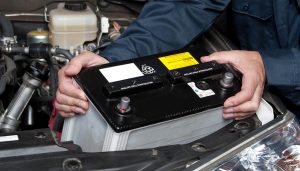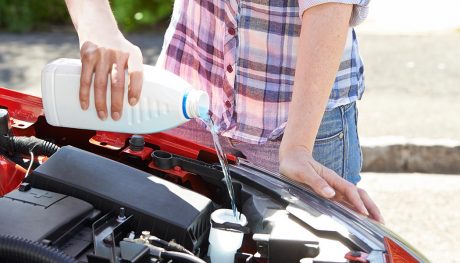
If your Check Engine light is blinking, you need to pull over immediately
3 Warning Lights That Need Your Attention Right Now
Your ride’s dashboard is full of car warning lights and indicators that activate for a multitude of reasons. Some are pretty obvious, like your headlights are on or you’re running low on fuel. Then, there are the really important warning lights – the ones that tell you to pull over, stop driving, and have your vehicle attended to by a professional, immediately, to avoid costly damage.
Understanding each and every warning light or message that may appear in your dashboard or instrument panel is important. Aside from keeping you and your passengers safe, in some cases, it could save you thousands of dollars.
Of course, the full story is in your owner’s manual, but below, we’ll look at three car warning lights that represent dire situations requiring your immediate attention.
Blinking Check Engine Light
There are hundreds of reasons why your vehicle’s check engine light may appear. A solidly-illuminated check engine light is an indication you need to take it in for a full diagnostic scan. That will reveal the reason the light came on. This should be done as soon as possible, but it doesn’t necessarily indicate something is seriously wrong right at that moment.
That is unless the check engine light is blinking or flashing. In some vehicles the light will come on red, instead of yellow or orange, to indicate the urgency or the situation.
Regardless of color, a blinking check engine light means that your engine is in danger of immediate and possibly extensive damage.
If your check engine light is blinking, you have one course of action. Pull over immediately, turn the engine off, and check your owner’s manual for further instructions.
Also, if your check engine light comes on, don’t reset it by unplugging the car battery. This won’t fix the problem that caused the light to engage. What’s more, in many newer vehicles, disconnecting battery power can cause problems or damage to other vehicle systems.
Low Oil Pressure
This light, or a warning message on a digital display, may pop up alongside a low reading on an oil-pressure gauge, if equipped. No matter how it’s displayed in your particular ride, this warning is activated when dangerously low oil pressure is detected inside of your engine.
Oil isn’t being circulated properly, and your powerplant is in immediate and urgent need of attention. Low oil pressure can be caused by numerous factors, including a leak or a broken oil pump.
In any case, since low oil pressure can ruin your engine almost immediately, there’s only one course of action if you see this warning. Pull over immediately, turn the engine off, and check your owner’s manual for further instructions.
The oil pressure warning light is not a reminder to have your oil change. If you don’t know the difference between the two, there’s likely an engine replacement job in your future. The low oil pressure warning light is not a reminder to have the situation assessed the next time your vehicle is in the shop. It needs attention right now.
Engine Overheat
Do you see a little red or orange thermometer in your instrument cluster? It may be accompanied by a coolant temperature gauge hovering near the red area at the end. If so, your car engine is overheating and is in danger of suffering widespread damage.
Liquid coolant is pumped through your engine to keep it running within a specific (safe) temperature range. When that range is exceeded, the overheat light is activated to tell the driver to take remedial action, immediately.
Even a few moments of driving with an overheated engine can cause harm. You could get warped cylinder heads, coolant pump failure and in rare and extreme cases even an engine fire.
If your engine is overheating, Turn off the A/C and crank your car heater to full blast. This will pull extra heat away from the engine. If this doesn’t work, you need to pull over as soon as possible. Check your owner’s manual for further instructions.
Once you’ve pulled over, don’t turn the engine off right away. Let the engine run with the heater running at max. Don’t open the radiator cap to check coolant levels until you know it’s safe to do so.





